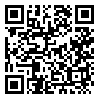Volume 12, Issue 48 (2015)
LIRE 2015, 12(48): 9-34 |
Back to browse issues page
Download citation:
BibTeX | RIS | EndNote | Medlars | ProCite | Reference Manager | RefWorks
Send citation to:



BibTeX | RIS | EndNote | Medlars | ProCite | Reference Manager | RefWorks
Send citation to:
A glance at application of literary criticisms which revolve round women. LIRE 2015; 12 (48) :9-34
URL: http://lire.modares.ac.ir/article-41-37773-en.html
URL: http://lire.modares.ac.ir/article-41-37773-en.html
Abstract: (4537 Views)
Narges Baqeri. PH.D
Parivash Mirzaian
Abstract
This article pays a glance at literary studies carried out between 1934 to 2012, which have revolved round women; manifesting these studies’ terms, frequencies, repetitions, absences, and neglected aspects. Moreover, efforts have been made to readout and analyze graphs and tables. The consideration of these studies has experienced a rising trend. Female researchers have carried out the majority of studies on women in Iran’s literature. Also, based on figures, the majority of studies have been conducted on classical poems, mainly the collection of Ferdowsi’s poems, Shahnameh. Meanwhile, a shortage of scientific studies on women is evident in the classical poems of women. Among the prose texts, One Thousand and One Nights has allocated the highest number of studies, and researchers revolving round women have been warmly welcomed in the domain of tales. Simin Daneshvar, as the first Iranian female author has contributed the majority of studies in this realm. In the contemporary poetry, the shortage of studies on the classical poems composed by women is not sensed, and the majority of such contemporary poems have been criticized and studied. The poems of Parvin Etesami have achieved the highest figures, as poems which bond classical and contemporary poetry.
Parivash Mirzaian
Abstract
This article pays a glance at literary studies carried out between 1934 to 2012, which have revolved round women; manifesting these studies’ terms, frequencies, repetitions, absences, and neglected aspects. Moreover, efforts have been made to readout and analyze graphs and tables. The consideration of these studies has experienced a rising trend. Female researchers have carried out the majority of studies on women in Iran’s literature. Also, based on figures, the majority of studies have been conducted on classical poems, mainly the collection of Ferdowsi’s poems, Shahnameh. Meanwhile, a shortage of scientific studies on women is evident in the classical poems of women. Among the prose texts, One Thousand and One Nights has allocated the highest number of studies, and researchers revolving round women have been warmly welcomed in the domain of tales. Simin Daneshvar, as the first Iranian female author has contributed the majority of studies in this realm. In the contemporary poetry, the shortage of studies on the classical poems composed by women is not sensed, and the majority of such contemporary poems have been criticized and studied. The poems of Parvin Etesami have achieved the highest figures, as poems which bond classical and contemporary poetry.
Keywords: Key terms: literary studied on women, Feminism in contemporary studies, literary criticism and women.
Article Type: مقالات علمی پژوهشی |
Subject:
Literary Criticism
Received: 2019/10/28 | Accepted: 2019/10/28 | Published: 2019/10/28
Received: 2019/10/28 | Accepted: 2019/10/28 | Published: 2019/10/28
| Rights and permissions | |
 |
This work is licensed under a Creative Commons Attribution-NonCommercial 4.0 International License. |






